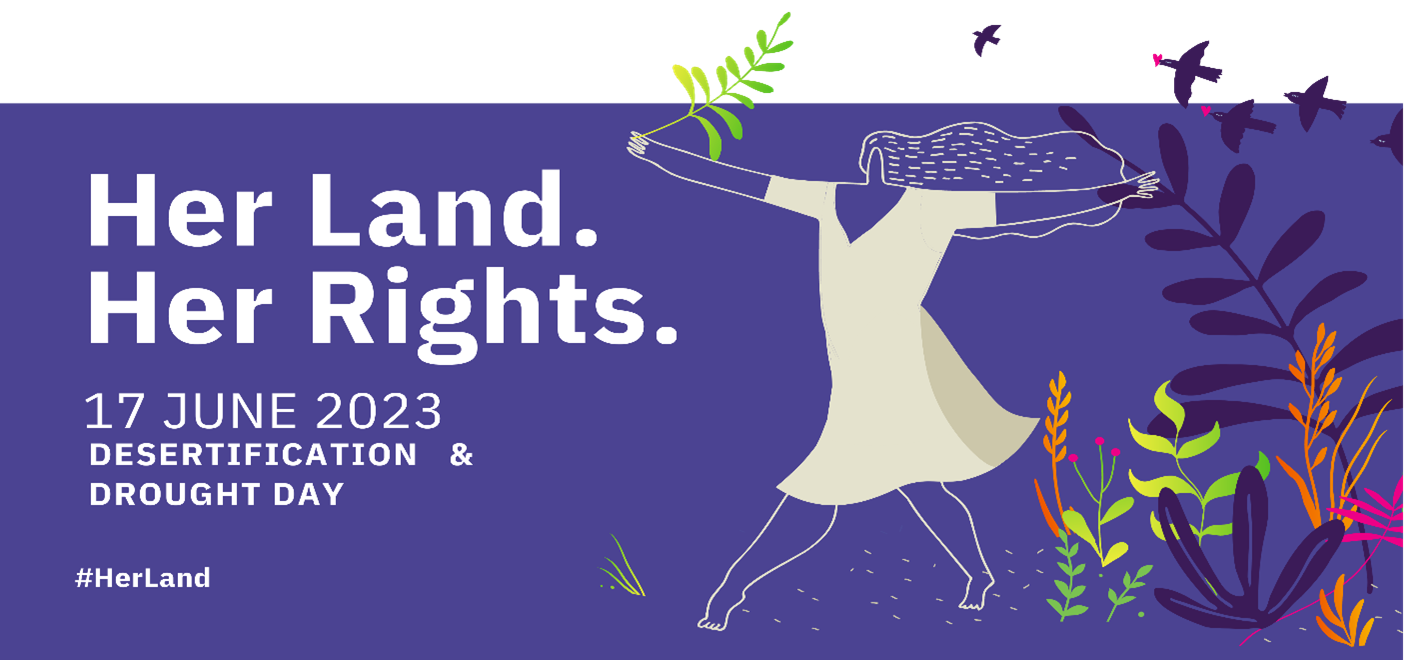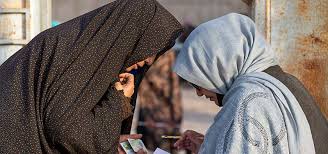- Courses
- GS Full Course 1 Year
- GS Full Course 2 Year
- GS Full Course 3 Year
- GS Full Course Till Selection
- Online Program
- GS Recorded Course
- NCERT (Recorded 500+ Hours)
- Polity Recorded Course
- Geography Recorded Course
- Economy Recorded Course
- AMAC Recorded Course
- Modern India, Post Independence & World History
- Environment Recoded Course
- Governance Recoded Course
- Science & Tech. Recoded Course
- International Relations and Internal Security Recorded Course
- Disaster Management Module Course
- Ethics Recoded Course
- Essay Recoded Course
- Current Affairs Recoded Course
- CSAT
- 5 LAYERED ARJUNA Mentorship
- Public Administration Optional
- ABOUT US
- OUR TOPPERS
- TEST SERIES
- FREE STUDY MATERIAL
- VIDEOS
- CONTACT US
DESERTIFICATION AND DROUGHT DAY 2023
DESERTIFICATION AND DROUGHT DAY 2023


Latest context
On June 17th of each year, people throughout the world mark the World Day to Combat Desertification and Drought.
- "Her Land. Her Rights" is the theme for this year. It focuses on women's land rights, which are crucial for attaining the interconnected global objectives of gender equality and land degradation neutrality by 2030 and advancing a number of other Sustainable Development objectives (SDGs).
Major Highlights of World Day to Combat Desertification and Drought
- The 1992 Rio Earth Summit highlighted desertification as one of the biggest obstacles to sustainable development, along with climate change and biodiversity loss.
- The UN General Assembly established the United Nations Convention to Combat Desertification (UNCCD) two years later, in 1994, and proclaimed June 17 as "World Day to Combat Desertification and Drought"—the only legally binding international agreement linking environment and development to sustainable land management.
- Later, in 2007, the UN General Assembly established the period from 2010 to 2020 as the United Nations Decade for Deserts and the Fight Against Desertification in an effort to mobilise international action to combat land degradation, once again under the direction of the UNCCD Secretariat.
- Addressing Problems:
- Land control by women is essential. However, they frequently lack rights and encounter obstacles everywhere. This restricts their prosperity and well-being, particularly when there is water shortages and soil degradation.
- The future of both women and humanity are improved by funding their access to land.
- Women and girls are disproportionately affected by desertification, land degradation, and drought because they frequently lack access to and control over land resources. Reduced agricultural production and growing water shortages have the greatest impact on them.
- Women typically have uneven and limited access to and control over land. They continue to be subject to discriminatory laws and practises that restrict their ability to inherit and their access to resources in many areas.
- Gender Equality: An Unfinished Business:
- According to the UNCCD study "The Differentiated Impacts of Desertification, Land Degradation, and Drought on Women and Men," gender equality is still a work in progress everywhere in the globe.
- Less than one in five landowners globally are women, despite the fact that women make up about half of the world's agricultural labour today.
- In more than 100 nations, customary, religious, or traditional laws and practises continue to deny women the ability to inherit their husband's property.
- Already, 200 million hours a day are spent collecting water by women worldwide. It might take more than an hour to get water just once in some nations.
- Global Campaign:
- UNCCD has started a worldwide initiative to honour women and girls for their achievements, leadership, and work in sustainable land management. This initiative is being carried out in collaboration with partners, well-known individuals, and influencers.
- Recommendations:
- Governments can support laws, regulations, and procedures that outlaw discrimination and protect women's access to resources like land.
- Businesses may emphasise investing in women and girls and facilitating access to technology and financing.
- People may help projects run by women that are rehabilitating the land.
What is the 2017 Gender Action Plan for the UNCCD?
- The Conference of the Parties (COP23) in Bonn, Germany, endorsed the gender action plan, 2017 to include gender equality and women's empowerment in discussions about and activities related to climate change.
- In order to boost the efficacy of the UN Framework Convention on Climate Change (UNFCCC), it is important to make sure that women may participate in discussions on climate change and that men and women are equally represented in all areas of the UNFCCC.
Facts about Desertification
- Land degradation in arid, semi-arid, and dry sub-humid regions. Climate changes and human activity are its main causes.
- Causes:
- Climate change.
- Urbanisation.
- Unsustainable Agricultural Practices.
- Overgrazing.
- Deforestation.
Facts about Drought
- The broad definition of a drought is a lack of precipitation for a long time, typically a season or more, which results in a water deficit that has a negative impact on plants, animals, and/or people.
- Causes:
- Variability in rainfall.
- Forest fires.
- Early withdrawal of the monsoon.
- Deviation in the route of monsoon winds.
- Land degradation in addition to Climate change.
Which initiatives are related to reducing desertification?
Indian Initiatives:
- Integrated Watershed Management Programme, since 2009-10: It was started by the Ministry of Rural Development's Department of Land Resources with the goal of restoring ecological balance by using, preserving, and developing depleted natural resources while also generating rural employment.
- Desert Development Programme: It was started in 1995 by the Ministry of Rural Development to lessen the negative effects of drought and to revitalise the natural resource base of the designated desert zones.
- National Mission on Green India: With a 10-year deadline, it was authorised in 2014 and put into action by the Ministry of Environment, Forests, and Climate Change with the aim of safeguarding, improving, and recovering India's declining forest cover.
Global Initiatives:
- Bonn Challenge:
- The Bonn Challenge is an international initiative to restore 350 million hectares of damaged and deforested land by 2030, and 150 million hectares by 2020.
- India joined the voluntary Bonn Challenge commitment to restore 21 million hectares of degraded and deforested land by the year 2030 at the UNFCCC Conference of the Parties (COP) 2015 in Paris.
- By 2030, it is now the goal to rehabilitate 26 million hectares of damaged and deforested land.

Prelims
Q. Consider the following pairs: (2014)
Programme/Project Ministry
1. Drought-Prone Area Ministry of Agriculture & Farmers
Welfare
2. Desert Development Programme Ministry of Environment, Forests &
Climate Change
3. National Watershed Project Development for Rainfed Areas Ministry of Rural Development
Which of the above pairs is/are correctly matched?
(a) 1 and 2 only
(b) 3 only
(c) 1, 2 and 3
(d) None
Ans: (d)
Mains
Q. The process of desertification does not have climate boundaries. Justify with examples. (2020)
Q. In what way micro-watershed development projects help in water conservation in drought-prone and semi-arid regions of India? (2016)
Q. “Empowering women is the key to control population growth”. Discuss. (2019)



